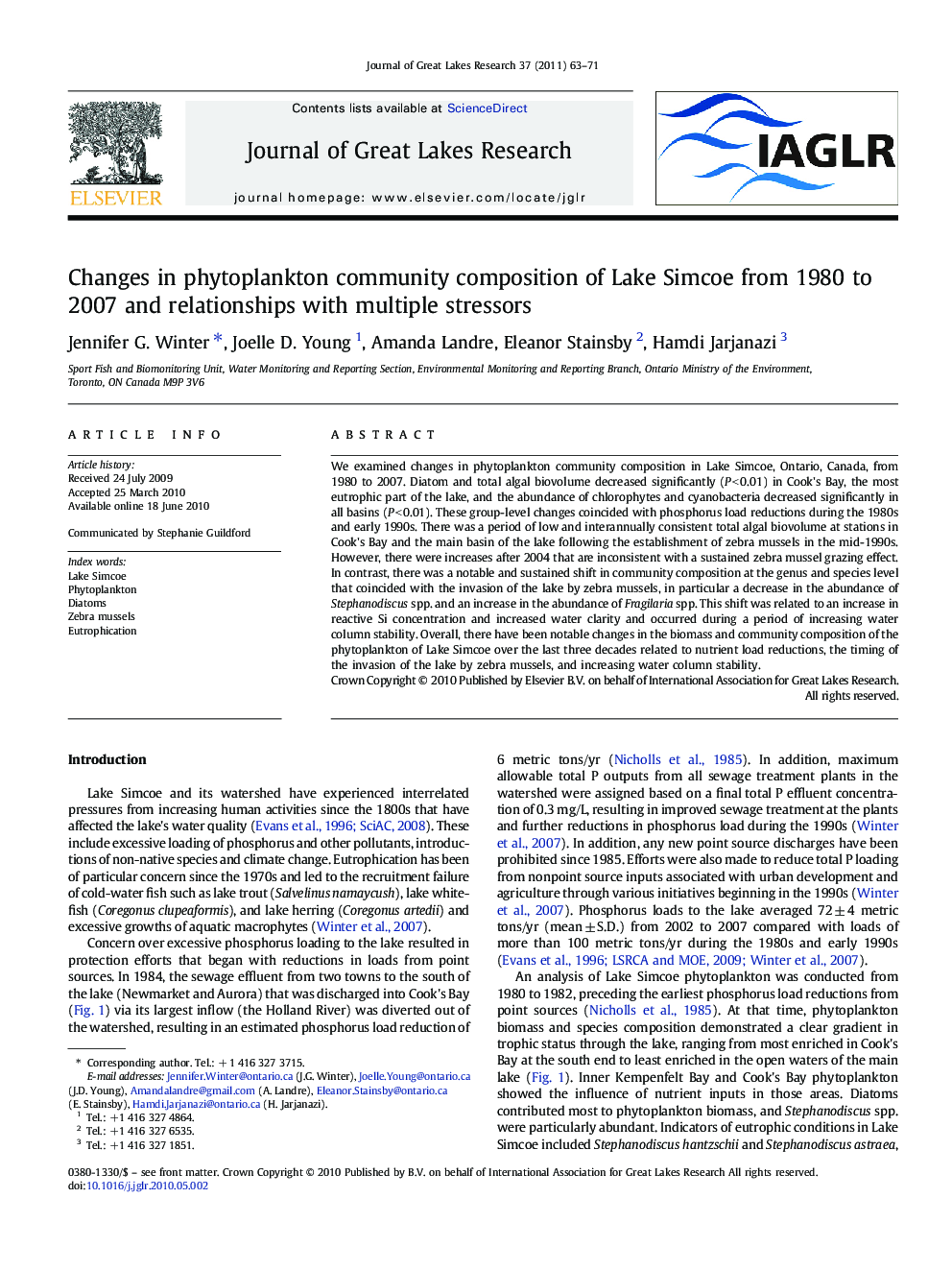| Article ID | Journal | Published Year | Pages | File Type |
|---|---|---|---|---|
| 4398949 | Journal of Great Lakes Research | 2011 | 9 Pages |
We examined changes in phytoplankton community composition in Lake Simcoe, Ontario, Canada, from 1980 to 2007. Diatom and total algal biovolume decreased significantly (P < 0.01) in Cook's Bay, the most eutrophic part of the lake, and the abundance of chlorophytes and cyanobacteria decreased significantly in all basins (P < 0.01). These group-level changes coincided with phosphorus load reductions during the 1980s and early 1990s. There was a period of low and interannually consistent total algal biovolume at stations in Cook's Bay and the main basin of the lake following the establishment of zebra mussels in the mid-1990s. However, there were increases after 2004 that are inconsistent with a sustained zebra mussel grazing effect. In contrast, there was a notable and sustained shift in community composition at the genus and species level that coincided with the invasion of the lake by zebra mussels, in particular a decrease in the abundance of Stephanodiscus spp. and an increase in the abundance of Fragilaria spp. This shift was related to an increase in reactive Si concentration and increased water clarity and occurred during a period of increasing water column stability. Overall, there have been notable changes in the biomass and community composition of the phytoplankton of Lake Simcoe over the last three decades related to nutrient load reductions, the timing of the invasion of the lake by zebra mussels, and increasing water column stability.
